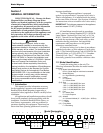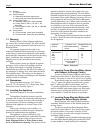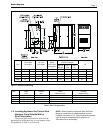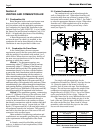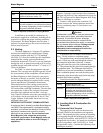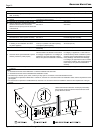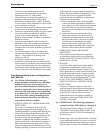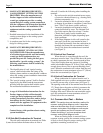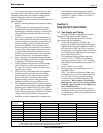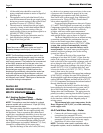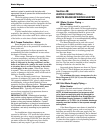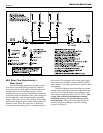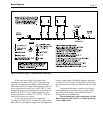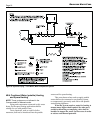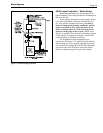
BRADFORD WHITE CORP.
Page 12
(c) MANUFACTURER REQUIREMENTS –
GAS EQUIPMENT VENTING SYSTEM
PROVIDED. When the manufacturer of
Product Approved side wall horizontally
vented gas equipment provides a venting
system design or venting system components
with the equipment, the instructions provided
by the manufacturer for installation of the
equipment and the venting system shall
include:
1. Detailed instructions for the installation of the
venting system design or the venting system
components; and
2. A complete parts list for the venting system
design or venting system.
(d) MANUFACTURER REQUIREMENTS –
GAS EQUIPMENT VENTING SYSTEM
NOT PROVIDED. When the manufacturer
of a Product Approved side wall horizontally
vented gas fueled equipment does not
provide the parts for venting the fuel gases,
but identifies “special venting systems”, the
following requirements shall be satisfied by
the manufacturer:
1. The identification of each “special venting
system” shall include either the listing of the
website, phone number or manufacturer’s address
where the venting system installation instructions
can be obtained; and
2. The “special venting systems” shall be Product
Approved by the Board, and the instructions
provided with that system shall include a parts
list and detailed installation instructions.
(e) A copy of all installation instructions for the
Product Approved side wall horizontally
vented gas fueled equipment, and all the
venting instructions, parts lists, and/or design
instructions for the venting system shall
remain with the appliance or equipment at the
completion of the installation.
Contact factory with questions about venting
system installation.
2.3.2 Side Wall Combustion Air Terminal
The side wall combustion air terminal (see Table
4) must be used when the heater takes air from a
side wall. Consider the following when installing the
terminal:
1. Do not locate the air inlet terminal near a source
of corrosive chemical fumes (e.g., cleaning fluid,
chlorine compounds, etc.)
2. Locate the terminal so that it will not be subject
to damage by accident or vandalism. It must be at
least 7 feet (2.1m) above a public walkway.
3. Locate the combustion air terminal so that it
cannot be blocked by snow. The National Fuel
Gas Code requires that it be at least 12 inches
(30cm) above grade, but the installer may
determine it should be higher, depending upon
local conditions.
4. If the Brute Magnum is side-wall vented to the
same wall, locate the vent terminal at least 3
feet (0.9m) horizontally from the combustion air
terminal, and locate the vent terminal at least 1
foot (0.3m) above the combustion air terminal
(see Figure 3).
2.3.3 Vertical Vent Terminal
When the unit is vented through the roof, the
vent must extend at least 3 feet (0.9m) above the point
at which it penetrates the roof. It must extend at least
2 feet (0.6m) higher than any portion of a building
within a horizontal distance of 10 feet (3.0m), and high
enough above the roof line to prevent blockage from
snow. When the combustion air is taken from the roof,
the combustion air must terminate at least 12" (30cm)
below the vent terminal (see Figure 2).
2.3.4 Vertical Combustion Air Terminal
When combustion air is taken from the roof, a
field-supplied rain cap or an elbow arrangement must
be used to prevent entry of rain water (see Figure 2).
The opening on the end of the terminal must be at least
12" (30cm) above the point at which it penetrates the
roof, and high enough above the roof line to prevent
blockage from snow. When the vent terminates on the
roof, the combustion air must terminate at least 12"
(30cm) below the vent terminal.
2.4 Common Vent Test — Boilers
NOTE: This section does not describe a method for
common venting Brute Magnum units. It describes
what must be done when a unit is removed from a
common vent system. Brute Magnum units require
special vent systems and fan for common vent.
Contact the factory if you have questions about
common venting Brute Magnum units.
When an existing boiler is removed from a
common venting system, the common venting system
is likely to be too large for proper venting of the
appliances remaining connected to it.




